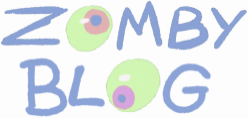The more I look into companies the more Freelancing seems to be the best option for me.
I was really lucky to attend a networking event hosted by Shotopop. I ran to a few old students as well as getting to connect with people from ShotoPop, Run with the Golden Wolf, The Line, and Psyop.
Everyone was really friendly and gave some great advice about startiong in the industy. Getting jobs mostly seems to be about just knowing people, or being persistant with messaging and showing work.

After the event I looked more into Shotopop and how they employ their freelance workers. I reached out to one of their current freelancers, Freya Hotson and asked her a few questions about how she got the job and what it was like.

1. How did you manage to get work with Shotopop? Did they reach out to you?
Actually, this time I reached out. The start of this year has been scarily quiet all round, with lay offs at the big CGI studios, cost of living etc. After a boom period in covid suddenly everything disappeared so I was emailing around studios to find work and got lucky.
2. What is the reality of freelancing? Is there alot of team work? Or are you just left to your own devices and dealing with a director
I’d say every project and every studio is different. It’s also really different post-covid now 85% of people are working remotely (myself included). Some studios the director will be sitting with you, you’ll have coffee together, they’ll regularly check in and and see how shots are progressing (this is when we were all in house). But other times the director could be based in Paris or LA (especially on commercials) so you’d essentially never see them and spend more time liaising with the producer or your animation director/lead.
I’d say these days you are often left to your own devices most of the time, but you’ll check in with your director 2/3 times a day
It really has changed a lot over the last 2 years. Luckily I’d already made the contacts and worked in London for 10 years when covid hit, I imagine it must be very hard to make connections now.
3. How long does a project usually last
I’d say the average would be 8 weeks? It can be as short and sharp as 2 and I’d class a ‘long’ project as 6 months+. 6 to 8 weeks is probably the norm.
4. How easy is it for you to adapt styles to each project? Do you have to spend a day doing studies ?
Mmm, good question. I think most people tend to gravitate towards work that is more in ‘their style’/the style of animation they most enjoy. It can be really hard to adapt to some styles, when I worked on Love Death & Robots I really struggled to nail the style the whole time, it was really tough. I think you get used to having a short-cut way of working around difficult characters/models, which just comes with practise. Everyone cheats a little! These days there isn’t really any breathing space in schedules to have time to ‘get to know’ a character, unless you’re working on a feature film. It’s really hit the ground running.
5. What advice would you give to students or people starting in the industry?
Lots! Some things I still have to remember – everyone will progress at a different rate than you, don’t compare your progress to other people’s. It’s a very competitive industry, be kind and pull each other up. Sometimes you won’t get a job and your friends will and it really hurts, but everything works out for the best in the long run – sometimes it’s a blessing in disguise!
That and – life drawing, life drawing, life drawing! It’s so good for you, it’s the best thing you can do for animation.
